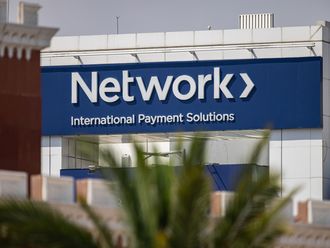Family businesses in the Middle East and North Africa are confronting important internal and external challenges. New generations are taking control of family conglomerates with different ideas about how these should operate and what the role of family members should be. Meanwhile, their external environment is becoming more uncertain and competitive.
To handle the generational transition and their external circumstances, family businesses should seek to become institutions that clearly separate business and family, have adaptive strategies to compete and grow within and outside the region and strive for distinct and sustainable corporate enablers. Each family business will have a different path to institutionalisation and priorities based on its own situation.
Across the region, family businesses play an important economic role, responsible for 60% to 80% of non-oil GDP in some countries. These companies often have diverse portfolios, own considerable property and are significant in such sectors as construction, distribution, industrial manufacturing, and real estate. Like other firms in the region, family businesses are affected by rising commercial competition and disruptive technologies, which with increasing political and economic uncertainty make it difficult to elaborate a focused strategy and build a competitive position.
A particularly important challenge is that financing is less easily available to family businesses than in the past. Banks have less liquidity and prioritise the funding of institutions with better transparency, higher levels of control and segregation, and credibility — such as multinationals, listed companies, and large corporates. Family businesses that are not institutionalised, lack robust governance, and do not have a clear strategy are less likely to receive financing. Also, the lack of alignment over family objectives at the time of generational transition can mean that some family members may not agree to leverage their balance sheet, sell off family assets, or contribute their own capital to the business.
Unique features
Family firms should respond to these challenges by identifying priority areas for action as they embark on their institutionalisation journey. They will need to take measures in one or more of three critical areas: governance — by building resilient and best-in-class family and corporate governance; strategy — by developing a coherent and capabilities-driven strategy; and corporate enablers — by putting in place professional corporate functions and securing financial resources.
Although each family business has unique features, they tend to be one of four archetypes: the “one-man show”, the “business-family merger”, the “going concern, going nowhere” and the “institutionalised family business.” For each type, the institutionalisation road map will be different.
The “one-man show” type relies on very few family members for success and lacks developed non-family corporate capabilities. As new generations join the business, the “one-man show” struggles to decide who should run the business and how. Issues around the areas of governance and corporate enablers should therefore be urgently addressed. “One-man show” leaders need to understand that the family business is about business, not family. They should put in place the right governance mechanisms — such as a formal board of directors and clear approval processes — to formalise decision-making and delegate sufficient power across the organisation. A “one-man-show” organisation also needs a conscious effort to professionalise its functions. It should revise its business structure, consider setting-up a holding entity with key corporate functions, and build management capabilities among staff who are not family members and align their incentives to those of the family.
Improving governance
The “business-family merger” type has a growth strategy and differentiating commercial capabilities but does not distinguish between what the family owns and corporate assets. A top priority should be improving governance. Family members should agree on a family governance model that draws boundaries in areas where the family and business overlap such as ownership rights and assets categorisation. Governance should be transparent and every decision should be taken in a clearly defined manner. The model should be simple and fair to appeal to all family members across generations.
The “going concern, going nowhere” type has a strong market position and established lines of business, but is not nimble enough to respond to changing market conditions. The main focus should be the development of an adaptive strategy for the future to remain competitive and grow. The “going concern, going nowhere” should select a handful of core capabilities and then build the entire business organisation and resources around these capabilities. This allows the “going concern, going nowhere” to become distinct from its competitors. It also helps it decide what its portfolio should look like, where and in which sectors it should operate, and the nature of its new investments.
Finally, the “institutionalised family business” type is the fortunate one, but it can lapse into complacency. This type of family business must maintain a dynamic strategy and continuously grow its differentiating capabilities to avoid backsliding, such as by postponing leaving underperforming businesses.
Family businesses in the region are encountering market disruption, macroeconomic uncertainty, and internal generational transition of power. They can overcome these challenges if they systematically transform themselves into professionally-run and structured institutions.
Ramy Sfeir, partner and Marc-Albert Hamalian, partner, at Strategy& (formerly Booz & Company), part of the PwC network.












